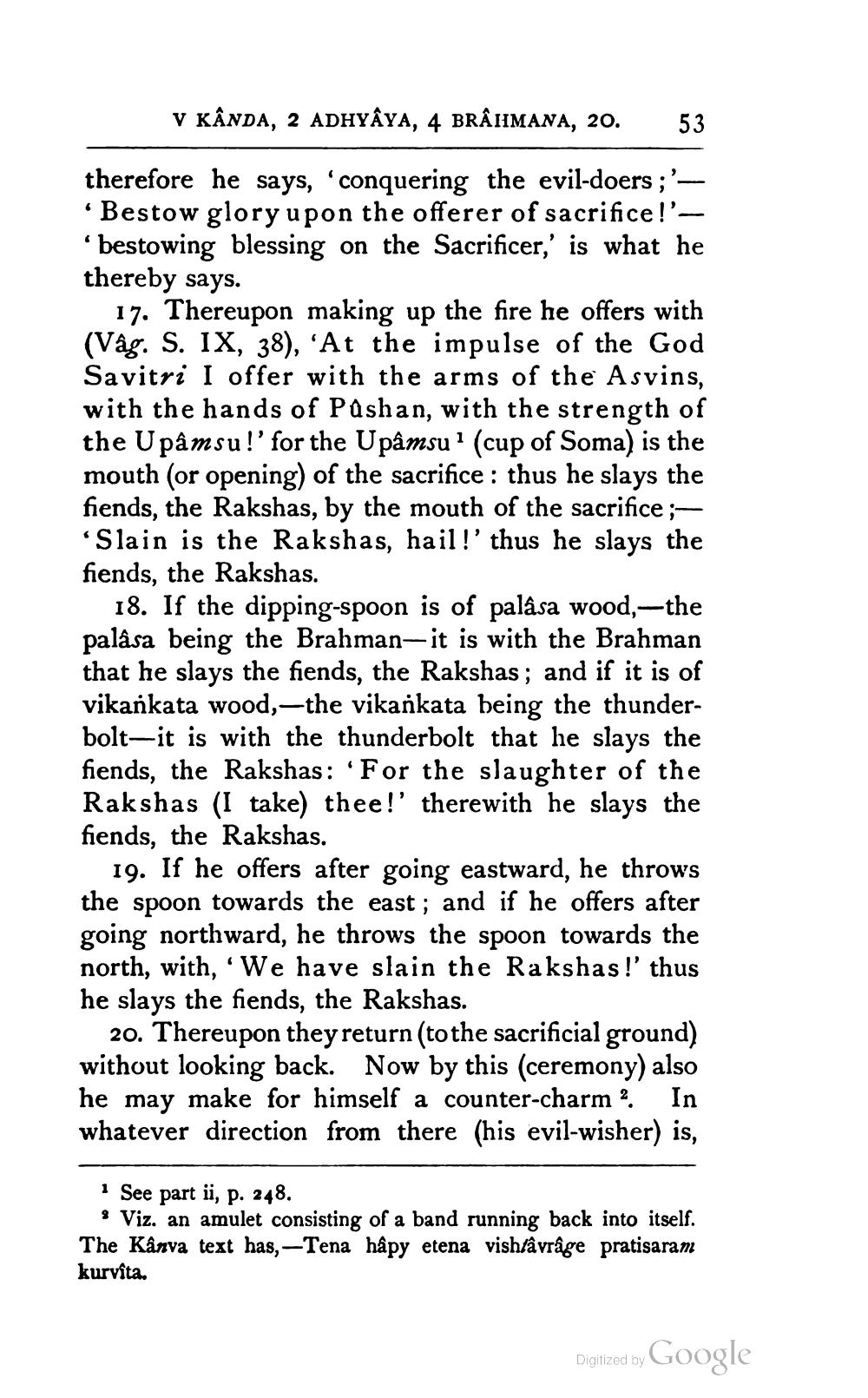________________
V KÂNDA, 2 ADHYÂYA, 4 BRÂHMANA, 20. 53
therefore he says, 'conquering the evil-doers;''Bestow glory upon the offerer of sacrifice!''bestowing blessing on the Sacrificer,' is what he thereby says.
17. Thereupon making up the fire he offers with (Vâg. S. IX, 38), 'At the impulse of the God Savitri I offer with the arms of the Asvins, with the hands of Pushan, with the strength of the Upâmsu!' for the Upâmsu1 (cup of Soma) is the mouth (or opening) of the sacrifice: thus he slays the fiends, the Rakshas, by the mouth of the sacrifice ;— 'Slain is the Rakshas, hail!' thus he slays the fiends, the Rakshas.
18. If the dipping-spoon is of palâsa wood,-the palâsa being the Brahman-it is with the Brahman that he slays the fiends, the Rakshas; and if it is of vikankata wood,—the vikankata being the thunderbolt-it is with the thunderbolt that he slays the fiends, the Rakshas: 'For the slaughter of the Rakshas (I take) thee!' therewith he slays the fiends, the Rakshas.
19. If he offers after going eastward, he throws the spoon towards the east; and if he offers after going northward, he throws the spoon towards the north, with, 'We have slain the Rakshas!' thus he slays the fiends, the Rakshas.
20. Thereupon they return (to the sacrificial ground) without looking back. Now by this (ceremony) also he may make for himself a counter-charm 2. In whatever direction from there (his evil-wisher) is,
1 See part ii, p. 248.
* Viz. an amulet consisting of a band running back into itself. The Kânva text has,-Tena hâpy etena vish/âvrâge pratisaram kurvita.
Digitized by Google




